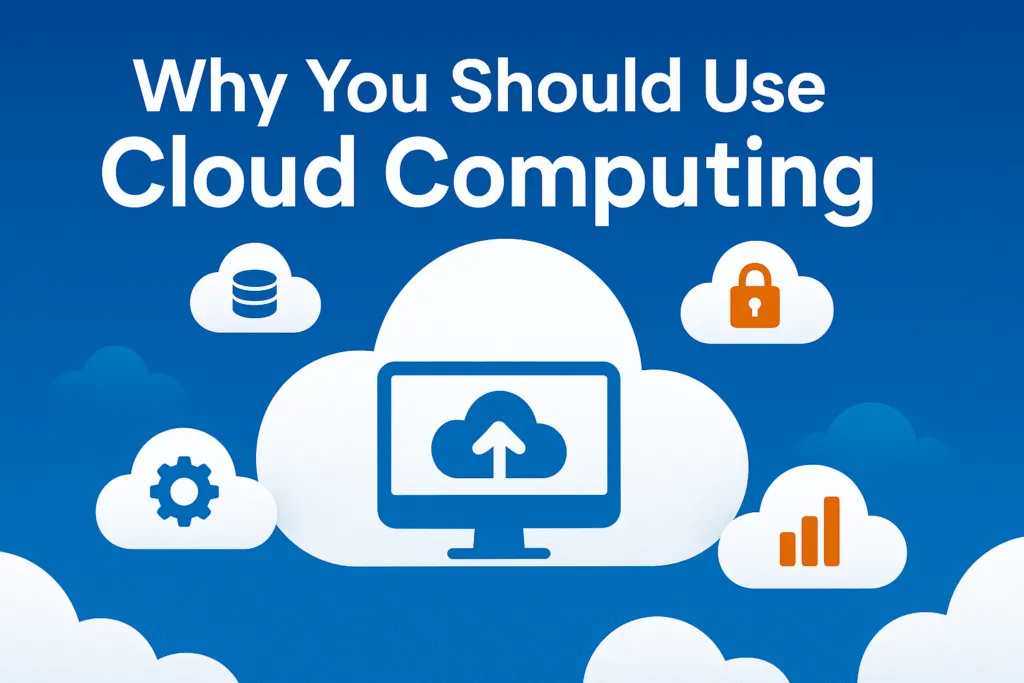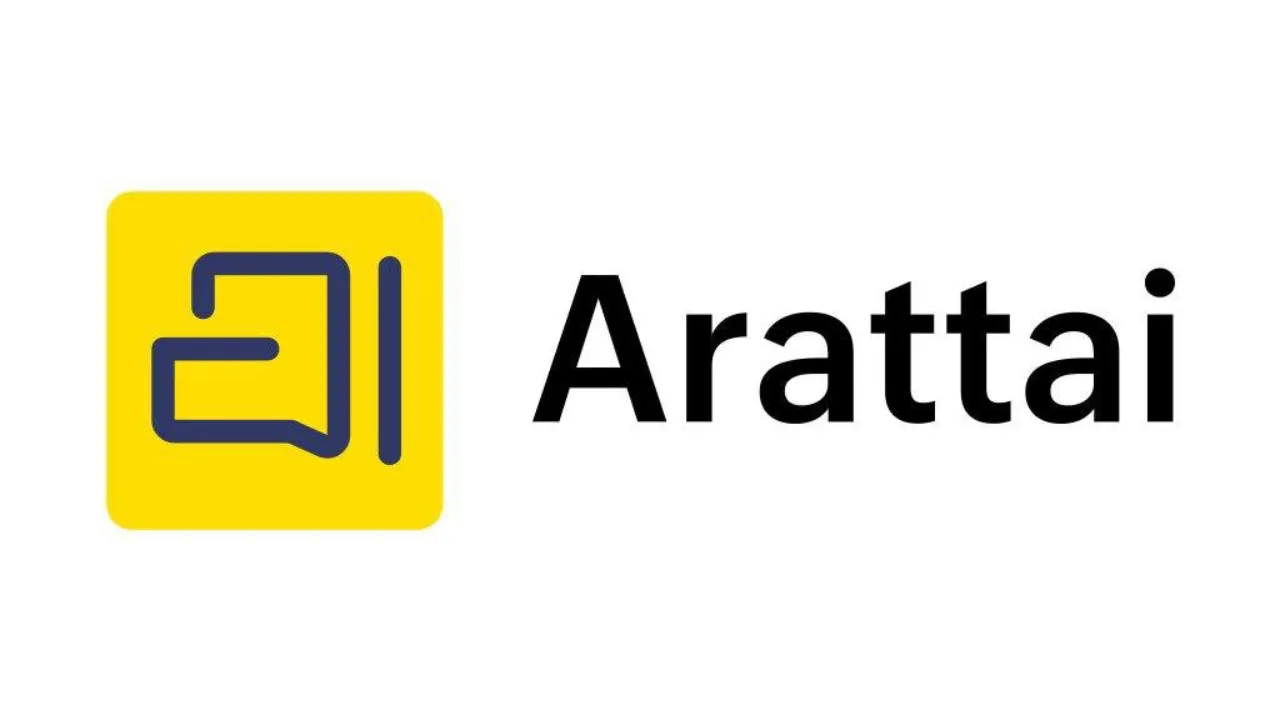Introduction to Cloud Computing
Cloud computing is one of the most transformative technologies of our time, quietly powering much of what we use online every day. From streaming your favorite shows to backing up photos on your phone, cloud computing plays a critical role in modern life. But what exactly is it?
In simple terms, cloud computing means accessing computing services like storage, servers, databases, software, and more over the internet, instead of relying on local hardware. Think of it as renting digital space and power from big tech companies, so you don’t have to own or maintain the infrastructure yourself. Whether you’re saving a file to Google Drive or running a business website hosted on AWS, you’re already using cloud computing.
Why does cloud computing matter so much today? The answer lies in its flexibility and cost-effectiveness. Individuals, startups, and large enterprises no longer need to invest heavily in expensive hardware or IT teams to scale their operations. With cloud computing, you can start small and grow as needed—paying only for what you use. This allows businesses to move faster, reduce costs, and stay competitive in a digital-first world.
Moreover, cloud computing supports remote work, real-time collaboration, and faster innovation, which have become essential in today’s fast-paced environment. Whether you’re a student, developer, or entrepreneur, understanding cloud computing opens up countless possibilities in both personal and professional spaces.
How Cloud Computing Works
At its core, cloud computing works by delivering computing services over the internet, rather than using local servers or personal devices to store and process data. These services include storage, processing power, databases, software, networking, and more—hosted on remote servers managed by companies like Amazon Web Services (AWS), Microsoft Azure, or Google Cloud Platform.
When you use cloud computing, your data and applications are stored in massive data centers. These centers are located all over the world and are connected via high-speed networks. Instead of running programs from your hard drive, you’re accessing them through a secure internet connection. The cloud handles everything in the background—like updates, scaling, and maintenance—so you can focus on using the service, not managing the infrastructure.
To understand cloud computing better, imagine electricity. You don’t generate your own power at home; you simply plug into the grid and pay for what you use. Cloud computing works the same way. You don’t need your own servers or IT team—you just subscribe to the services you need, when you need them.
Another simple analogy is online storage like Google Drive or Dropbox. Instead of saving files only on your laptop, you upload them to the cloud. This allows you to access them from any device, anywhere in the world. That same concept applies to software, platforms, and even complete IT environments.
This “on-demand” model is what makes cloud computing so powerful. It provides unmatched flexibility, cost savings, and scalability—no matter how big or small your needs are.
Read More: Google Cloud’s simple breakdown of cloud technology
Key Characteristics of Cloud Computing
Cloud computing isn’t just a new way to store or access data—it’s built on a foundation of unique features that make it flexible, scalable, and efficient. Here are the five key characteristics that define how cloud computing works and why it’s so widely adopted:
On-Demand Self-Service
Cloud computing allows users to access resources like storage, processing power, or applications instantly without needing human intervention from the service provider. You can launch a server, install software, or increase storage with just a few clicks—making it perfect for developers, startups, and businesses that want speed and independence.
Broad Network Access
Cloud services are available over the internet and can be accessed from anywhere using devices like laptops, smartphones, or tablets. This means you don’t have to be tied to a specific physical location to work or access your data. All you need is a reliable internet connection, and the cloud does the rest.
Resource Pooling
In cloud computing, resources such as storage, memory, and processing power are pooled together and shared across multiple users. These resources are dynamically assigned based on demand, which helps service providers use their infrastructure efficiently while offering affordable services to users.
Rapid Elasticity
One of the biggest advantages of cloud computing is its ability to scale quickly. Whether your website suddenly gets a traffic spike or your app needs more computing power, the cloud automatically adjusts resources in real-time. This elasticity ensures smooth performance without downtime or manual upgrades.
Measured Service
Cloud computing platforms use a pay-as-you-go model. This means you’re billed only for what you use—whether it’s storage, bandwidth, or computing time. It provides transparency, control over costs, and eliminates the need for large upfront investments.
These characteristics together make cloud computing a smart, scalable, and modern solution for anyone using technology today.
Types of Cloud Computing
Cloud computing comes in various forms, each designed to meet different needs and levels of control, security, and scalability. The three primary types of cloud computing are Public Cloud, Private Cloud, and Hybrid Cloud. Understanding the differences between them is essential for choosing the right solution—whether you’re an individual user, a startup, or an enterprise-level organization.
1. Public Cloud
The public cloud is the most commonly used form of cloud computing. In this model, services such as storage, servers, and applications are delivered over the internet by third-party providers like Amazon Web Services (AWS), Microsoft Azure, or Google Cloud Platform. These providers own and manage the entire infrastructure, and customers simply rent the resources they need.
One of the biggest advantages of the public cloud is cost-effectiveness. You don’t need to buy or maintain any physical hardware. You only pay for what you use, making it ideal for startups, developers, and small businesses that want flexibility without heavy upfront investment. It’s also highly scalable, allowing you to easily add or reduce resources based on demand.
However, since resources are shared among multiple users, the public cloud may not always meet strict security or compliance requirements for sensitive industries like finance or healthcare.
2. Private Cloud
A private cloud offers many of the same benefits as the public cloud—such as flexibility and scalability—but it is used exclusively by a single organization. The infrastructure can be hosted either on-site or in a third-party data center, but it is dedicated solely to that organization.
The private cloud provides a higher level of security and control, which is crucial for businesses that deal with confidential data or must comply with strict regulations. Companies can customize the infrastructure to meet their exact needs and manage it internally or through a service provider.
While private clouds offer better data privacy and customization, they also come with higher costs. Organizations must invest in hardware, maintenance, and IT staff to manage the infrastructure, making it more suitable for large enterprises or sectors like banking, government, and healthcare.
3. Hybrid Cloud
As the name suggests, a hybrid cloud combines elements of both public and private clouds, allowing data and applications to be shared between them. This model provides greater flexibility by letting organizations keep sensitive operations on a private cloud while leveraging the public cloud for less critical workloads or during peak usage times.
For example, a company might store customer data on a private cloud for security reasons, but use the public cloud for running its website or handling seasonal traffic spikes. This approach enables cost optimization without sacrificing security or performance.
Hybrid cloud is becoming increasingly popular among businesses that want the best of both worlds. It allows them to remain agile, optimize resources, and quickly adapt to changing demands. However, managing a hybrid environment can be complex and may require advanced tools and expertise to ensure smooth integration and data consistency.
Which Type is Right for You?
Choosing between public, private, and hybrid cloud depends on your specific needs:
- Go with Public Cloud if you need cost-efficiency, fast deployment, and scalability without managing the infrastructure.
- Choose Private Cloud if your operations demand high security, control, and regulatory compliance.
- Opt for Hybrid Cloud if you want flexibility to run sensitive and non-sensitive workloads across both environments.
Each model has its strengths, and as cloud computing evolves, many organizations adopt a multi-cloud strategy—using more than one cloud provider to avoid dependency and improve reliability.
Understanding these types of cloud computing helps you make informed decisions that align with your business goals, technical requirements, and budget.
Cloud Service Models
Cloud computing offers different layers of services to meet a wide range of needs—from raw infrastructure to ready-to-use software. These layers are known as cloud service models, and they are typically categorized into three main types: IaaS, PaaS, and SaaS. Each model serves a different purpose and offers varying levels of control, flexibility, and management.
1. IaaS (Infrastructure as a Service)
IaaS is the most fundamental cloud service model. It provides virtualized computing resources over the internet—such as servers, storage, and networking. With IaaS, you can rent IT infrastructure on-demand instead of buying and maintaining physical servers.
This model gives you maximum flexibility and control over your environment, much like owning your own hardware—but without the upfront cost or maintenance headache. Developers and IT administrators often use IaaS to build, test, and manage web applications.
Examples include Amazon Web Services (EC2), Microsoft Azure, and Google Compute Engine. IaaS is commonly used for hosting websites and apps, creating virtual machines, setting up development and testing environments, and storing large volumes of data securely.
2. PaaS (Platform as a Service)
PaaS goes a step further by offering a complete development and deployment environment in the cloud. It includes everything from servers and storage to development tools, databases, and frameworks—all managed by the cloud provider.
With PaaS, developers can focus purely on coding and building applications without worrying about the underlying infrastructure. It’s ideal for teams that want to streamline their workflow and reduce deployment time.
Popular platforms include Google App Engine, Microsoft Azure App Services, and Heroku. PaaS is used for building web or mobile applications, running APIs and microservices, simplifying app deployment and scaling, and automating software updates and maintenance.
3. SaaS (Software as a Service)
SaaS is the most user-friendly cloud service model. It delivers fully functional software applications over the internet, usually through a web browser. You don’t need to install, update, or manage anything—everything is handled by the service provider.
SaaS is great for individuals and businesses that need ready-to-use solutions with minimal setup. From email platforms to project management tools, SaaS applications are part of everyday life.
Examples include Gmail, Microsoft 365, Zoom, and Dropbox. SaaS is commonly used for email and communication tools, customer relationship management (CRM), office productivity software, and file sharing and collaboration.
Each cloud service model provides a different level of control, customization, and convenience. IaaS offers the most control and is perfect for tech teams. PaaS simplifies development while speeding up deployment. SaaS offers instant access to software with zero maintenance. Choosing the right model depends on your technical skills, business needs, and how hands-on you want to be with the infrastructure.
Everyday Examples of Cloud Computing
Cloud computing isn’t just a buzzword used by tech professionals—it’s something most of us use every single day, often without even realizing it. From watching movies online to backing up your phone’s photos, cloud computing plays a silent yet powerful role in making our digital lives smoother and more connected.
Google Drive is one of the most common examples. When you save files, documents, or photos to Google Drive, you’re actually storing them on Google’s cloud servers. This means you can access those files anytime, from any device, as long as you have an internet connection. You don’t need a USB drive or worry about losing your data if your laptop crashes.
Netflix is another great use case of cloud computing in action. When you stream a movie or TV show, the video isn’t stored on your device—it’s delivered to you from the cloud. Netflix uses powerful cloud infrastructure to host its vast library of content, analyze user preferences, and stream high-quality videos to millions of users around the world in real-time.
Zoom, the popular video conferencing platform, relies entirely on cloud technology. When you join a Zoom meeting, your video, audio, chat, and screen sharing are all managed and transmitted through cloud servers. This allows people across different time zones and continents to collaborate instantly and efficiently.
Other common examples include Spotify for music streaming, Dropbox for file storage, Canva for online design, and Gmail for email. Even when you use social media apps like Instagram or Facebook, your photos, messages, and data are stored and processed in the cloud.
These everyday services show how deeply cloud computing is integrated into our routines. It brings convenience, speed, and accessibility that traditional computing simply can’t match. Whether you’re working, relaxing, or communicating, cloud computing is working silently behind the scenes to make it all possible.
Benefits of Cloud Computing
Cloud computing offers several powerful benefits that have made it a game-changer for individuals and businesses alike. Its advantages go beyond just storing data online—cloud computing transforms how we work, collaborate, and innovate.
One of the biggest benefits is cost efficiency. With cloud computing, there’s no need to invest heavily in expensive hardware, servers, or data centers. Instead, you pay only for the resources and services you use, which helps reduce upfront costs and ongoing maintenance expenses. This pay-as-you-go model is especially beneficial for startups and small businesses that want to manage budgets wisely while accessing top-tier technology.
Another important advantage is scalability. Cloud services allow you to quickly scale your computing resources up or down based on your needs. Whether your website experiences a sudden surge in traffic or you need extra storage during busy periods, the cloud adjusts instantly without delays or the need for manual upgrades. This flexibility ensures your operations run smoothly without interruptions.
Accessibility is a key reason why cloud computing has become so popular. Because cloud services are delivered over the internet, you can access your applications and data from anywhere, on any device—be it a laptop, smartphone, or tablet. This makes remote work, collaboration, and real-time updates easier than ever, empowering teams to stay connected no matter where they are.
Lastly, cloud computing offers high reliability. Leading cloud providers maintain multiple data centers worldwide, ensuring your data is backed up and protected against hardware failures, natural disasters, or other risks. This redundancy minimizes downtime and helps keep your services available around the clock.
In summary, cloud computing’s cost efficiency, scalability, accessibility, and reliability combine to create a powerful technology solution. It helps businesses grow faster, operate smarter, and adapt to changing demands—while giving individuals more freedom and convenience in how they use technology every day.
Challenges and Concerns
While cloud computing offers many benefits, it also comes with certain challenges and concerns that users and businesses should be aware of before fully adopting it.
One of the biggest concerns is security and privacy. Since cloud computing involves storing data and running applications on remote servers, it means sensitive information is entrusted to third-party providers. Although major cloud companies invest heavily in security measures, there is always a risk of data breaches, unauthorized access, or cyberattacks. Businesses handling confidential or regulated data need to carefully evaluate the security protocols and compliance standards of their cloud providers to protect their information.
Another challenge is the possibility of downtime risks. Even the most reliable cloud providers can experience outages or technical glitches. When cloud services go down, users may lose access to critical applications and data temporarily, which can disrupt business operations. While most providers have strong backup systems and redundancy to minimize downtime, it’s important for organizations to have contingency plans and understand their provider’s service level agreements (SLAs).
Vendor lock-in is a concern many companies face when using cloud computing. This happens when a business becomes heavily dependent on a single cloud provider’s tools, services, or infrastructure, making it difficult or costly to switch to another provider. Vendor lock-in can limit flexibility, increase costs over time, and slow down innovation if the provider doesn’t keep up with evolving needs.
In summary, security and privacy issues, potential downtime, and vendor lock-in are key challenges in cloud computing. Being aware of these risks and planning accordingly helps users and organizations make informed decisions and build a cloud strategy that balances benefits with safeguards.
Who Uses Cloud Computing?
Cloud computing has become an essential technology embraced by a wide range of users—from everyday individuals to massive global corporations. Its versatility and scalability make it suitable for almost any size or type of user.
Individuals often use cloud computing without even realizing it. Services like Gmail, Google Drive, Dropbox, and streaming platforms such as Netflix or Spotify all rely on the cloud to deliver content and store data. For personal users, cloud computing provides easy access to files, photos, and media from any device, anywhere. It also offers backup and sharing options that make managing digital life more convenient and secure.
Small businesses benefit greatly from cloud computing because it offers enterprise-level technology without the high cost or complexity. Startups and growing companies use cloud services to host websites, manage customer data, collaborate remotely, and run applications without investing in physical servers or IT staff. The pay-as-you-go model allows them to scale resources as their business grows, keeping expenses manageable while staying agile.
Large enterprises rely heavily on cloud computing to support complex operations across multiple locations and teams. They use the cloud for big data analytics, global communication, disaster recovery, and to build flexible IT environments that can quickly adapt to market demands. Cloud computing helps these organizations reduce infrastructure costs, improve security, and innovate faster by providing powerful tools and computing resources on demand.
In short, cloud computing serves everyone—from individuals managing daily tasks to small businesses scaling up, and large enterprises transforming their industries. Its flexibility and accessibility make it a fundamental part of the modern digital world.
Future of Cloud Computing
The future of cloud computing looks incredibly promising, as new technologies and innovations continue to expand its capabilities and impact. One of the most exciting trends is the integration of artificial intelligence (AI) with cloud services. Cloud platforms are increasingly offering AI-powered tools that help businesses analyze data, automate tasks, and make smarter decisions. This combination allows companies to harness advanced machine learning and data analytics without needing specialized hardware or expertise, making AI accessible to a wider audience.
Another important development shaping the future is edge computing. While traditional cloud computing relies on centralized data centers, edge computing moves data processing closer to where it’s generated—like on local devices or nearby servers. This reduces latency, improves speed, and enables real-time applications such as autonomous vehicles, smart cities, and Internet of Things (IoT) devices. Edge computing and cloud computing will work together to create more efficient and responsive digital environments.
Cloud adoption is also growing rapidly across industries. Sectors like healthcare, finance, manufacturing, and retail are leveraging cloud technology to improve operations, enhance customer experiences, and drive innovation. The cloud’s scalability, flexibility, and cost-effectiveness make it ideal for supporting new business models and digital transformation efforts.
As cloud computing evolves, it will continue to be a backbone for emerging technologies, enabling faster innovation and smarter solutions. Whether it’s through AI integration, edge computing, or industry-specific applications, the cloud’s future will unlock new possibilities for individuals and organizations worldwide.
Conclusion
Cloud computing has revolutionized the way we access and use technology by providing flexible, scalable, and cost-effective solutions over the internet. From the basic concept of renting computing resources to the advanced integration of AI and edge computing, cloud technology continues to evolve and reshape industries around the globe. We explored its key characteristics, different types like public, private, and hybrid clouds, and the various service models including IaaS, PaaS, and SaaS. Everyday examples such as Google Drive, Netflix, and Zoom show how deeply cloud computing is woven into our daily lives. While it offers many benefits like cost savings, accessibility, and reliability, challenges like security concerns, downtime risks, and vendor lock-in remain important considerations. Cloud computing serves a broad audience—from individuals to large enterprises—and its future promises even greater innovation and adoption.
In essence, understanding cloud computing is essential in today’s digital world. Whether you are a casual user or a business leader, leveraging the cloud can unlock new opportunities, improve efficiency, and keep you ahead in an increasingly connected and fast-paced environment. Embracing cloud technology thoughtfully and strategically will be key to success now and in the future.
Also Read: Ultimate Internet of Things (IoT) Guide – 2025
Frequently Asked Questions About Cloud Computing
1. What is cloud computing in simple terms?
Cloud computing means using computing services like storage, servers, and software over the internet instead of relying on your own computer or local servers. It allows you to access data and applications anytime, anywhere.
2. How is cloud computing different from traditional computing?
Traditional computing uses local hardware and software installed on personal devices or on-premise servers, while cloud computing provides resources remotely via the internet, offering more flexibility, scalability, and cost savings.
3. What are the main types of cloud computing?
The three main types are Public Cloud (shared resources accessible over the internet), Private Cloud (dedicated resources for a single organization), and Hybrid Cloud (a mix of both public and private clouds).
4. What are IaaS, PaaS, and SaaS?
IaaS (Infrastructure as a Service) offers virtualized hardware resources, PaaS (Platform as a Service) provides development platforms and tools, and SaaS (Software as a Service) delivers ready-to-use applications over the internet.
5. Is cloud computing secure?
Cloud providers invest heavily in security, but users should also follow best practices. Security depends on the provider’s measures and how users manage access and data protection.
6. Can I access cloud services from any device?
Yes, cloud services are accessible from any internet-connected device such as laptops, smartphones, and tablets.
7. What are the benefits of cloud computing?
Key benefits include cost efficiency, scalability, easy accessibility, and high reliability.
8. Are there any risks with cloud computing?
Challenges include potential security issues, downtime risks, and dependency on a single cloud provider (vendor lock-in).
9. Who uses cloud computing?
Everyone from individuals and small businesses to large enterprises use cloud computing for various needs.
10. What is the future of cloud computing?
The future includes integration with AI, expansion of edge computing, and wider adoption across industries worldwide.













